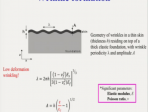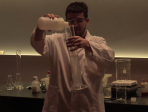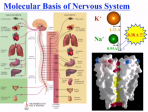 00:29:00
00:29:00
How to Model the Action of Complex Biological Systems on a Molecular Level
Despite the enormous advances in structural studies of biological systems we are frequently left without a clear structure function correlation and cannot fully describe how different systems actually work. This introduces a major challenge for compu....
More details | Watch now 00:29:00
00:29:00
Electron Transfer Theory in Single Molecule Studies of Intermittent Fluorescence of Quantum Dots and in Initial Steps in Dye Sensitized Solar Cells
Intermittently fluorescing single molecule systems are found in many materials, including semiconductor quantum dots (QD), dyes on crystalline or nanoparticle film surfaces, and biological systems. The QD's show a ~ -3/2 power law for the distributio....
More details | Watch now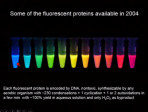 00:33:00
00:33:00
Molecules Against Cancer or for Long-Term Memory Storage
For cancer diagnosis and therapy, we are developing activatable cell penetrating peptides (ACPPs), synthetic molecules with a novel amplifying mechanism for homing to diseased tissues. ACPPs are polycationic cell penetrating peptides whose cellular u....
More details | Watch now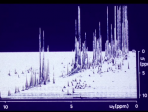 00:26:00
00:26:00
NMR in Biology, Chemistry and Medicine
For the discovery of the physics phenomenon of nuclear magnetic resonance (NMR), Felix Bloch and Edward Purcell were awarded the Nobel Prize in Physics in 1952. NMR has then been used in a wide range of fundamental studies in physics, and in the 1960....
More details | Watch now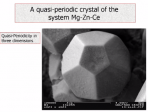 00:30:00
00:30:00
Quasi-Periodic Crystals
Quasicrystals - or, as Shechtman would prefer, quasi-periodic materials - now have scientists thinking about matter in a new light, but they also have many possible practical applications. Because of their uneven structure, quasicrystals do not have ....
More details | Watch now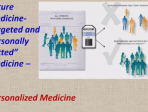 00:29:00
00:29:00
Are We Going to Cure all Diseases and at What Price?
We are exiting the era where our approach to treatment of these and many other diseases is 'one size fits all', and enter a new era of 'personalized medicine' where we shall tailor the treatment according to the patient's molecular/mutational profile....
More details | Watch now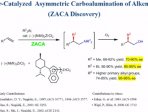 00:35:00
00:35:00
How to Synthesize a Wide Variety of Optically Active Compounds with >99% Optical Purity
The discovery and synthetic applications of a widely applicable and highly enantioselective (>99% ee) protocol consisting of the 'ZACA reaction' (Zr-catalyzed asymmetric carboalumination of alkenes), purification of the ZACA-products by lipase-cat....
More details | Watch now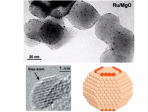 00:31:00
00:31:00
Catalysis at Surfaces: From Atoms to Complexity
This lecture addresses the question if spatio-temporal self-organisation of matter which is so characteristic for living systems can also be verified with a simple inorganic reaction in which the observed phenomena of complexity can be traced back to....
More details | Watch now 00:27:00
00:27:00
Roles of the Ubiquitin System in Health and Disease
The selective degradation of many short-lived proteins in eukaryotic cells is carried out by the ubiquitin-mediated proteolytic system. In this pathway, proteins are targeted for degradation by covalent ligation to ubiquitin, a highly conserved small....
More details | Watch now 00:31:00
00:31:00
Structural Aspects of Protease Control in Health and Disease
This lecture starts out with a very brief review of the history of protein crystallography and continue with our studies since 1970 on proteolytic enzymes and their control. Proteolytic enzymes catalyse a very simple chemical reaction, the hydrolytic....
More details | Watch now 00:31:00
00:31:00
Where am I From? Where Are You Going?
Scientific research is a never-ending 'journey of knowledge'. There is more meaning in experiencing various encounters and making a good journey itself than reaching the destination. Basic science has eternal cultural value; it has served to heighten....
More details | Watch now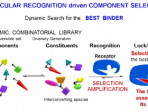 00:33:00
00:33:00
Towards Adaptive Chemistry
Molecular chemistry implementing reversible chemical bonds between atoms in molecules, as well as supramolecular chemistry, whose molecular components are held together by intermolecular interactions, are able to undergo a continuous change in consti....
More details | Watch now 00:32:00
00:32:00
Aquaporin Water Channels – From Atomic Structure to Malaria
Aquaporin channels allow water to rapidly cross cell membranes in all living organisms. AQP1 confers red cells and proximal renal tubules with high water permeability. Present in renal collecting duct, AQP2 is regulated by vasopressin, and human muta....
More details | Watch now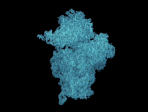 00:31:00
00:31:00
Seeing is Believing – A Hundred Years of Visualizing Molecules
It has been a hundred years since molecules were first visualized directly by using x-ray crystallography. That gave us our first look at molecules as simple as common salt to one as complex as the ribosome that has almost a million atoms. In the las....
More details | Watch now 00:28:00
00:28:00
Optical Microscopy – the Resolution Revolution
Throughout the 20th century it was widely accepted that a light microscope relying on conventional optical lenses cannot discern details that are much finer than about half the wavelength of light (200-400 nm), due to diffraction. However, in the 199....
More details | Watch now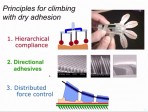 00:26:00
00:26:00
Climbing with adhesion
Mark Cutkosky is Fletcher Jones Professor of Mechanical Engineering at Stanford. Here he discusses climbing robots and how they can take their cue from nature.
More details | Watch now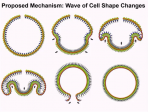 00:25:00
00:25:00
Physical perspective on cytoplasmic streaming
Professor Ray Goldstein FRS is the Schlumberger Professor of Complex Physical Systems at the University of Cambridge. Here he describes a biological example of topological inversion, with relevance to engineering problems in human technology.
More details | Watch now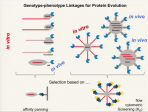 00:32:00
00:32:00
Bioinspired genotype–phenotype linkages
Florian Hollfelder is based in the Department of Biochemistry at the University of Cambridge. He is interested in mechanism in chemistry and biology. Here he describes using principles of natural selection to make functional proteins.
More details | Watch now